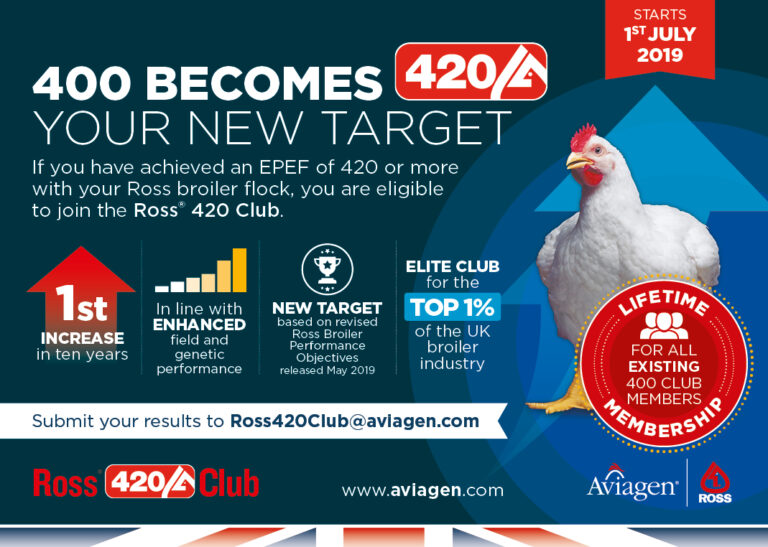Broiler production has become so efficient Aviagen has made its elite Ross Club tougher to join. So how did the sector get so good at what is does?
Aviagen has raised the bar for entry to its Ross Club, which recognises the top 1% of broiler growers in the UK. On July 1 the Ross 400 Club became the Ross 420 Club, with the qualifying entry level raised to a European Performance Efficiency Factor (EPEF) of 420 and above.
The decision was based on two complimentary factors – the excellent performance of UK broiler growers, combined with a rise in genetic potential of Ross birds.
This development reflects a wider picture throughout farming – consistently improving yields, and a growing base of data and expertise in the crops and species we use for food. Genomics is continuing to find ways to maximise the genetic potential of the animals we farm. In short, we are continuing to work out how to produce more for less.
This is in all sectors – not just poultry. Last month an encouraging report was published, showing how despite a growing world population, we are beginning to use less land for livestock. Achieving Peak Pasture, from California-based The Breakthrough Institute, describes with FAO data how the amount of pasture for grazing livestock has globally shrunk for the first time, despite a growing world population and increased demand for food. It is a reflection of continually improving efficiency in food production through genetics and more efficient techniques.
Likewise, the poultry sector has seen continual improvements in yield over the decades, both in broilers and layers.
The Ross Club increase in entry level corresponds to the recently released 2019 Ross Broiler Performance Objectives. These targets reflect an upgrade in field and genetic performance, which has seen an EPEF rise of five to six points year on year since the objectives were last released in 2014.
Big Data is a term used more and more in the industry. The massive amounts of data gathered from farms can be compared with production forecasts and processing targets to achieve greater accuracy. Big Data is allowing people to predict, analyse, and to understand the cause and effect much better than was possible in the past.
Club member Patrick Joice of Uphouse Farm in Norfolk says data plays a crucial role in getting good performance. “Collecting and analysing our flock data has allowed us to compare our performance to breed standard and also against our past flocks which is invaluable to see where the birds are performing well and perhaps more importantly where they are not. This has allowed us to focus on key stages in their lives analysing data daily, often working with our vet, to understand what is going on and then develop strategies to improve performance.”
Stuart Thomson, head of UK sales and technical, expressed his gratitude to all who have reached Club-level performance. “A big thank you goes to all of our Ross Club participants for their outstanding stockmanship and attention to detail that have enabled us to raise the bar on our Club entry level. Theirs is a story of success, as our number has risen from three since the Club’s introduction to more than 400 in 2018.”
How birds are selected for the best genetic traits
According to Aviagen, improvement in feed efficiency (FCR – feed conversion ratio) is one of the factors considered when it selects for traits in its breeding programme. Continuous investment began in 2004 in feed conversion analysis with electronically monitored feed stations capturing every meal eaten by each pedigree bird in the selection program. Lifetime FCR is measured in a group environment under conditions reflecting commercial farms and natural feeding behaviour.
Aviagen includes genomics information in the routine selection of its elite lines. Aviagen’s genomics project is concerned with identifying naturally occurring markers within the genome of elite birds and using those markers to help breed stronger and more productive birds through the current selective breeding program. Aviagen began using genomics in its commercial selection program in June 2012 and became the first company to include genomic information as a critical additional source of information in the R&D breeding program.


